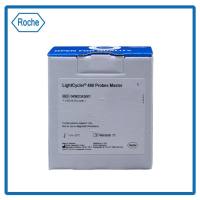Subtraction Hybridization for the Isolation of Strain-Specific Rhizobium DNA Probes
互联网
544
The principle of subtraction hybridization protocols is the removal from one cell type of nucleic acid sequences that are shared with other cell types (sources of subtracter sequences), to leave only sequences unique to the cell type or organism in question. Subtracter sequences may be from one or several related organisms and can be modified in a variety of ways to permit separation of unwanted hybrids from the cell-specific sequences in the hybridization mixture. These include immobilization on solid supports to facilitate removal from the mobile phase by centrifugation (1 ,2 ) and biotinylation to allow capture of hybrids by affinity chromatography with streptavidin (1 ), by binding to avidin-coated beads (3 ,4 ) or by streptavidin-phenol-chloroform extraction (5 ). These techniques are limited in their capacities to generate a pool of highly enriched cell-specific sequences, either by reliance on a single, partially efficient subtraction/separation system, or by an inability to amplify the small quantities of cell-specific nucleic acid generated by each round of subtraction. We describe here a combined subtraction hybridization and polymerase chain reaction (PCR) amplification procedure that overcomes these problems. It was originally designed to isolate unique DNA sequences from Rhizobium spp. (6 ), but is applicable to any group of bacteria to generate species- or strain-specific DNA probes.









